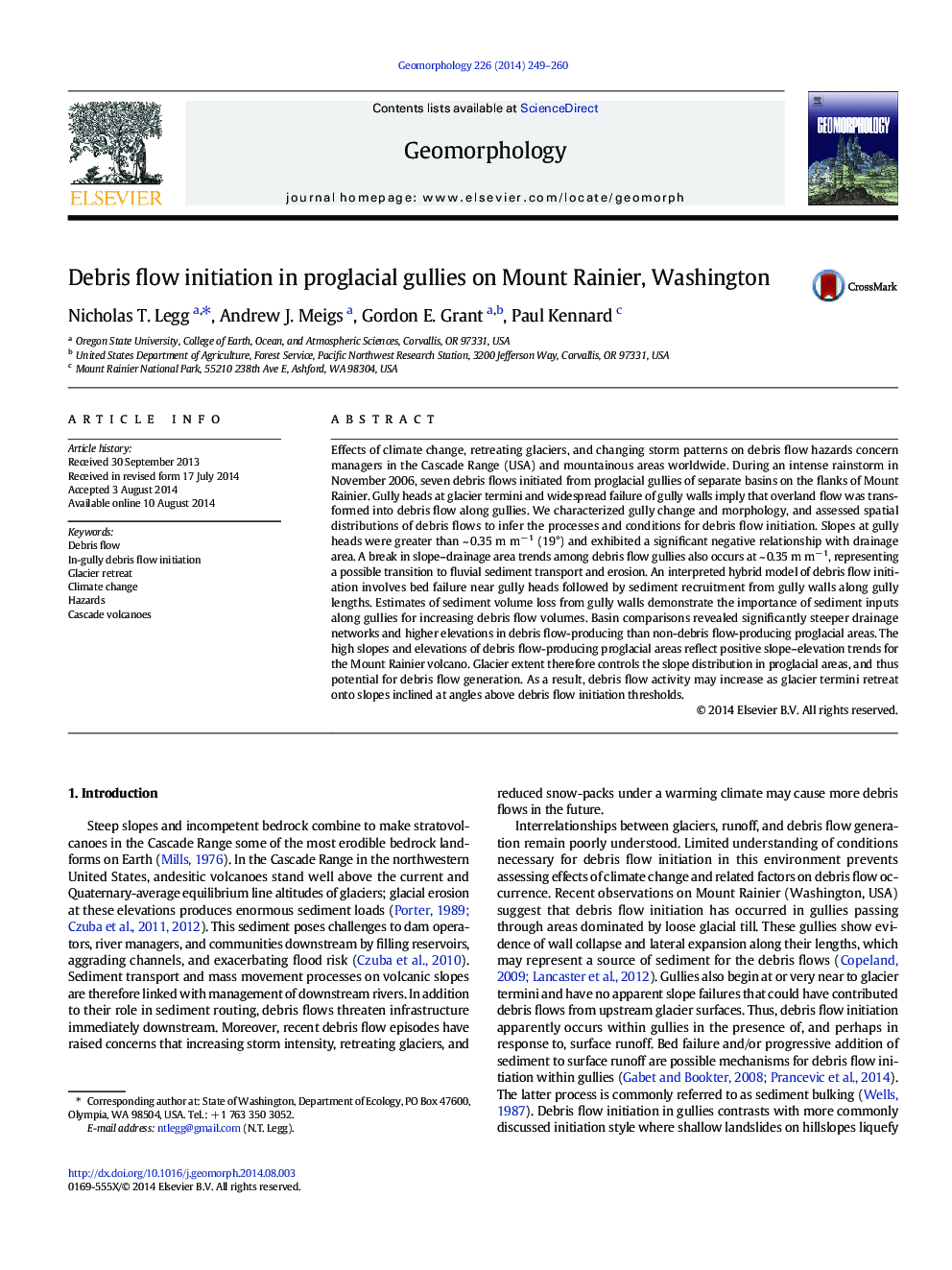| Article ID | Journal | Published Year | Pages | File Type |
|---|---|---|---|---|
| 4684455 | Geomorphology | 2014 | 12 Pages |
•We analyze seven debris flows initiated in proglacial gullies.•Sediment from gully walls is identified as a major source for debris flows.•Slope–drainage area trends suggest a common threshold for debris flow initiation.•Glaciers affect debris flow potential by altering slope distributions in a basin.
Effects of climate change, retreating glaciers, and changing storm patterns on debris flow hazards concern managers in the Cascade Range (USA) and mountainous areas worldwide. During an intense rainstorm in November 2006, seven debris flows initiated from proglacial gullies of separate basins on the flanks of Mount Rainier. Gully heads at glacier termini and widespread failure of gully walls imply that overland flow was transformed into debris flow along gullies. We characterized gully change and morphology, and assessed spatial distributions of debris flows to infer the processes and conditions for debris flow initiation. Slopes at gully heads were greater than ~ 0.35 m m− 1 (19°) and exhibited a significant negative relationship with drainage area. A break in slope–drainage area trends among debris flow gullies also occurs at ~ 0.35 m m− 1, representing a possible transition to fluvial sediment transport and erosion. An interpreted hybrid model of debris flow initiation involves bed failure near gully heads followed by sediment recruitment from gully walls along gully lengths. Estimates of sediment volume loss from gully walls demonstrate the importance of sediment inputs along gullies for increasing debris flow volumes. Basin comparisons revealed significantly steeper drainage networks and higher elevations in debris flow-producing than non-debris flow-producing proglacial areas. The high slopes and elevations of debris flow-producing proglacial areas reflect positive slope–elevation trends for the Mount Rainier volcano. Glacier extent therefore controls the slope distribution in proglacial areas, and thus potential for debris flow generation. As a result, debris flow activity may increase as glacier termini retreat onto slopes inclined at angles above debris flow initiation thresholds.
